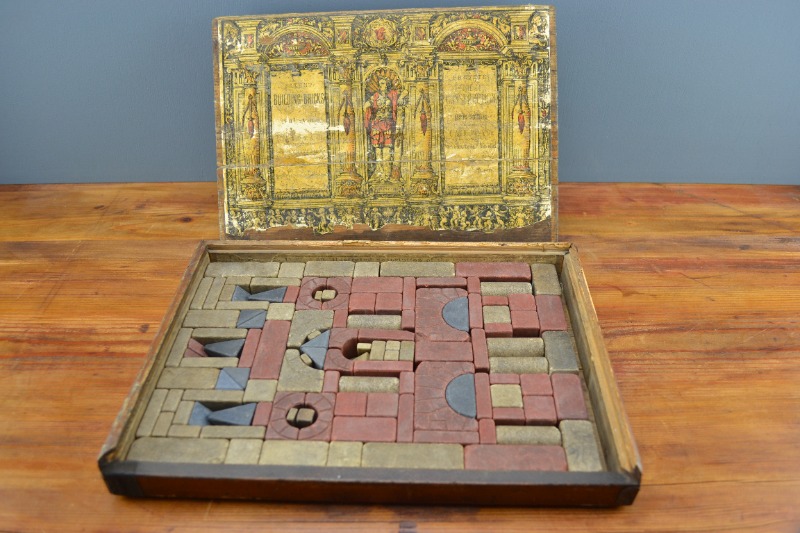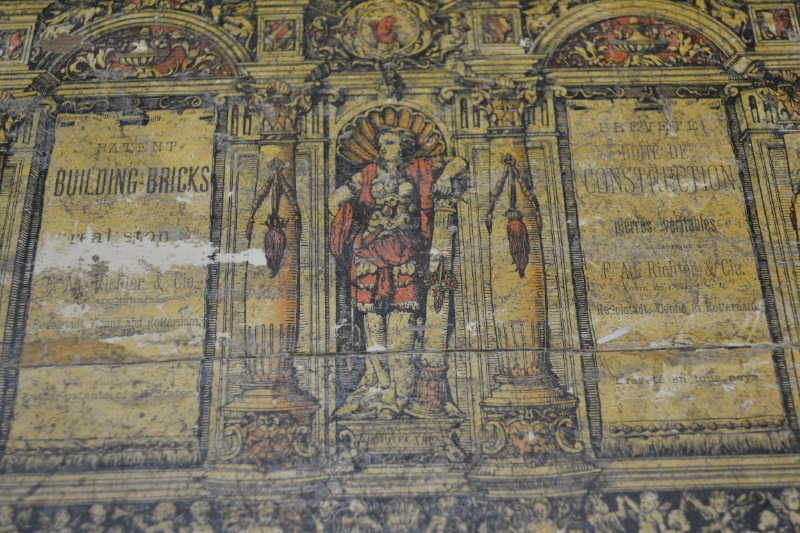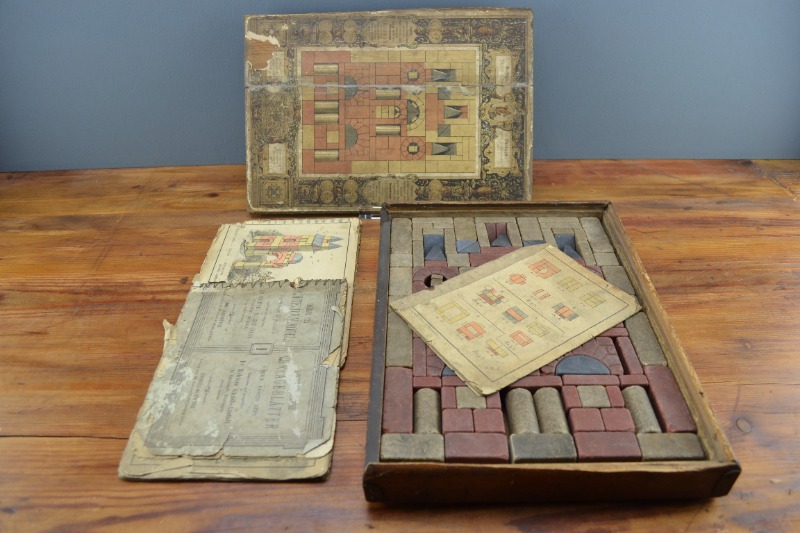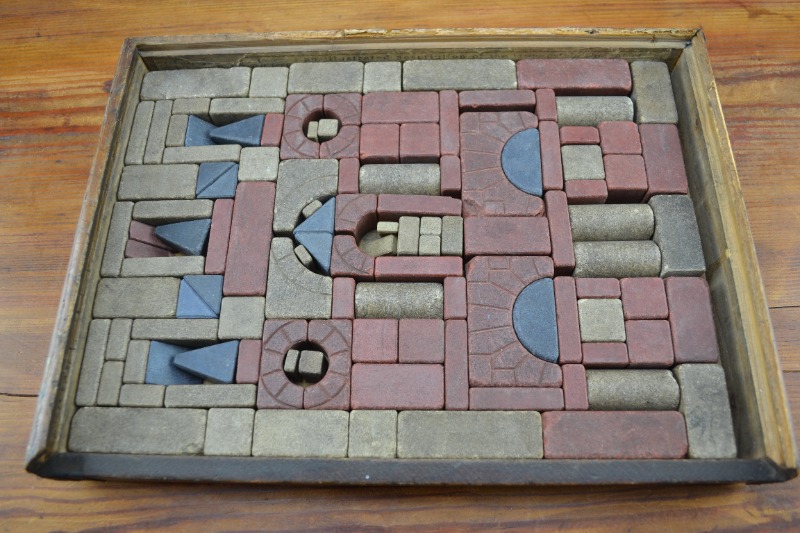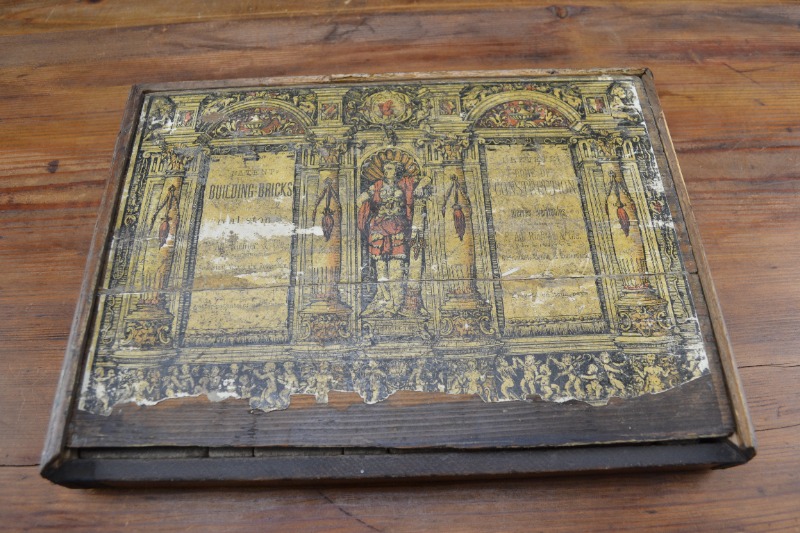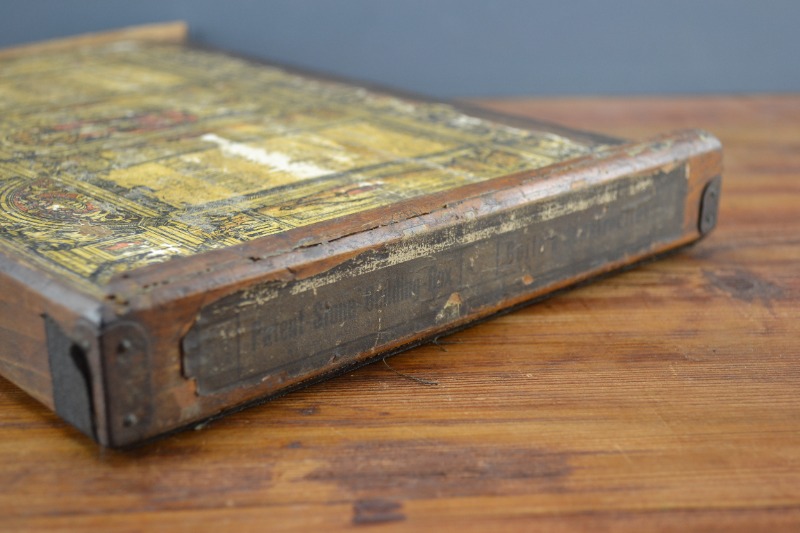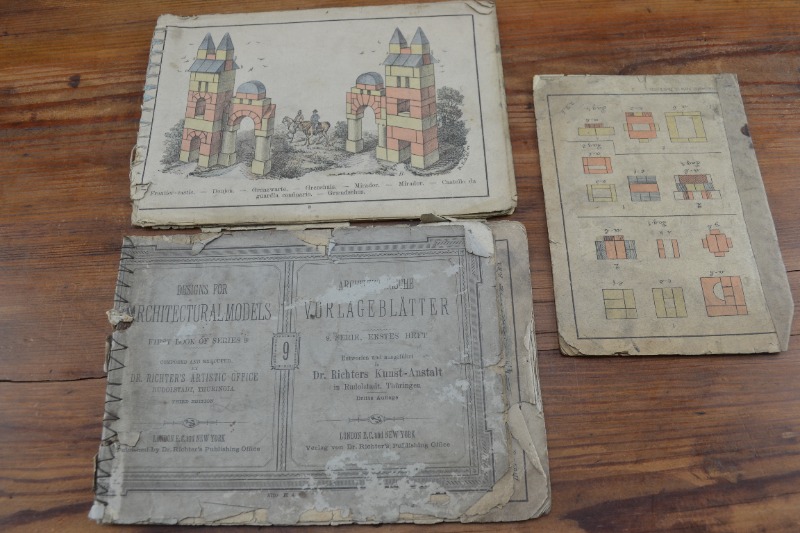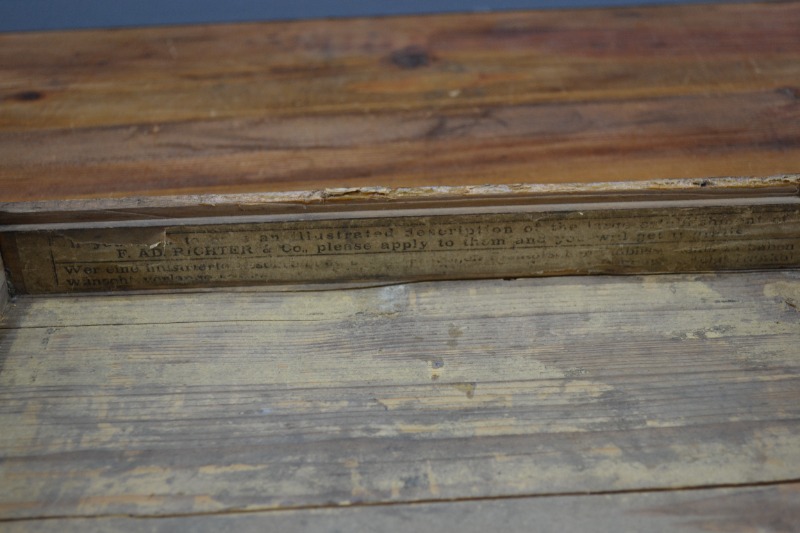Victorian Richter’s Anchor Stones (Small) No. 9 with Architectural Model Book, 1887
Age:
1887
Material:
Dimensions:
30.5cm x 22.5cm
Shipping:
Standard Parcel
Price:
SOLD
A set of building blocks by F. Ad. Richter & Co, No. 9, in a wooden box with slide-out lid. The lid has a classical design by the Nuremberg architect C. Walther with the firm’s early trademark of a squirrel. The lid is titled ‘Patent Building Bricks real stones, F Ad. Richter & Cie, Rudelstadt, Vienna and Rotterdam’ in both French and English. Underneath it states the stones are patented in all countries. The reverse side shows the model for repacking the stones with a list of prize medals down the side, obtained in London, Amsterdam, Antwerp, Halle, Teplice, Graz, Antwerp, Berlin, Welts, etc. At the bottom is a view of Richter’s factory.
The box came with a booklet showing architectural models that could be made with the blocks. This was the ‘First Book of Series 9’, designed by Dr Richter’s artistic office and printed by his publishing office. Both the inside of the lid and the booklet are dated at the bottom for October 1887 (8710) with an E for England and the number of produced. In this instance the box shows a 2 for 2,000. An additional pattern book from 1885 is also included with ‘R.K.A.’ for the Richter Art Department.
The box has all its original stones. A few of them have worn corners but are essentially in good condition with no breaks. The box lid has a break down the middle with a tape repair. The paper is age-stained and worn. The model book is in poor condition and is broken in half with a hand sewn repair to both halves. However, the coloured designs inside are still useable.
These building blocks were originally designed by the artist Gustav Lilienthal for the German educationalist Dr Georgen. With his brother, he invented an artificial stone made out of quartz sand, chalk and linseed oil, which were heavier and with a rougher surface so that they did not fall over so easily. Lacking in marketing skills, the brothers sold their idea to Friedrich Adolf Richter in 1880. Richter immediately expanded his factory complex in Rudolstadt and engaged famous artists, illustrators and architects to work on his project. In 1884 he offered a complete series of building stones for sale. He already had a publishing house in Leipzig producing educational material and used it to pursue a concerted advertising campaign. A label inside the box promotes a free catalogue. He entered his stones into numerous competitions and boasted in his 1885 catalogue 15 gold, 6 silver and three bronze medals. By spring 1886, his catalogue listed 175 unique stones in the larger 2.5 cm size und 63 smaller (2cm) stones. This catalogue was available in 13 languages. In 1895 he trademarked the design as "Richter‘s Anchor Stone Building Sets". The boxes of stones were designed to be accumulative. So, for instance, adding box No. 9A to No. 9 provided the same stones as the two-tier box No. 13.

